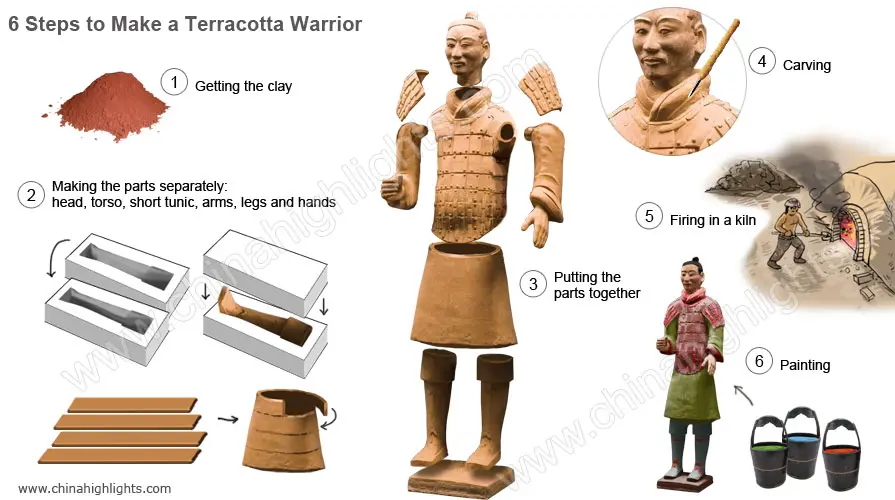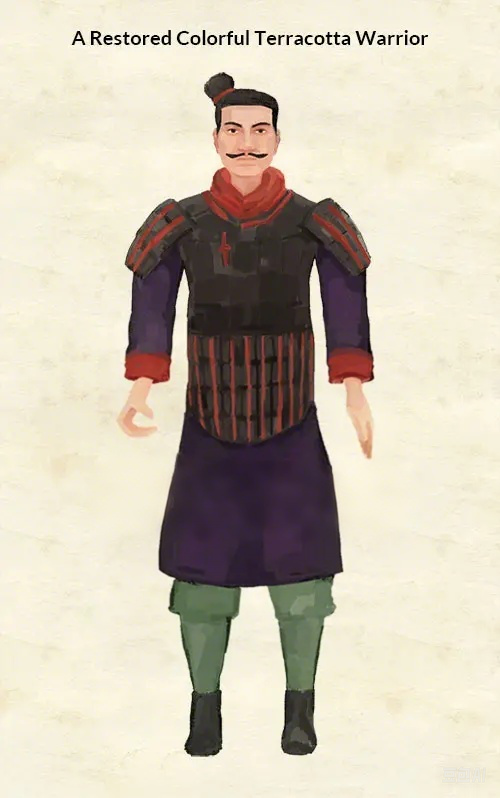
How to Make a Terracotta Warrior
The Terracotta Warriors were created over 2,200 years ago during the Qin Dynasty. Here’s a step-by-step guide to the traditional method used by ancient Chinese artisans:
1. Obtain the Clay
The primary material was local yellow clay, sourced from the surrounding area. The clay was carefully screened and ground to remove impurities such as leaves, stones, and rubbish.
2. Create Separate Parts
The warriors were made in separate pieces:
- Head: Created using molds
- Torso: Formed from the pedestal to the collar
- Arms and Legs: Molded separately (straight limbs were easier to mold, while bent arms required division at the elbow)
- Hands: Made separately and attached later
3. Assemble the Parts
Once all individual pieces were shaped, they were assembled together using clay as an adhesive. The body and arms were hollow, while the legs and feet were solid.
4. Carve Details
Skilled artisans carefully carved intricate details into the figures, including:
- Facial features (eyes, eyebrows, noses, mouths)
- Hairstyles and beards
- Clothing patterns and armor details
- Weapons and equipment
5. Fire in Kilns
The assembled figures were placed in kilns and fired at a high temperature of around 1000°C for about a week. The kilns had to be large enough to accommodate the life-sized warriors, with an inner diameter of at least 2 meters. The figures were sometimes placed upside down during firing, and small holes were left in appropriate places to allow flames to enter the body cavities evenly.
6. Paint the Warrior
After firing, the warriors were painted with vibrant colors:

- A layer of paint mixed with fresh pig’s blood was applied to help the paint adhere
- Pigments like cinnabar, red clay, and azurite were ground and mixed with animal glue
- Different amounts of paint were applied to various parts to achieve the desired effect
Each Terracotta Warrior was uniquely crafted, with distinct facial features and details, making them appear like real individuals. This meticulous process required a high level of craftsmanship and organization, involving hundreds of artisans working under strict quality control.